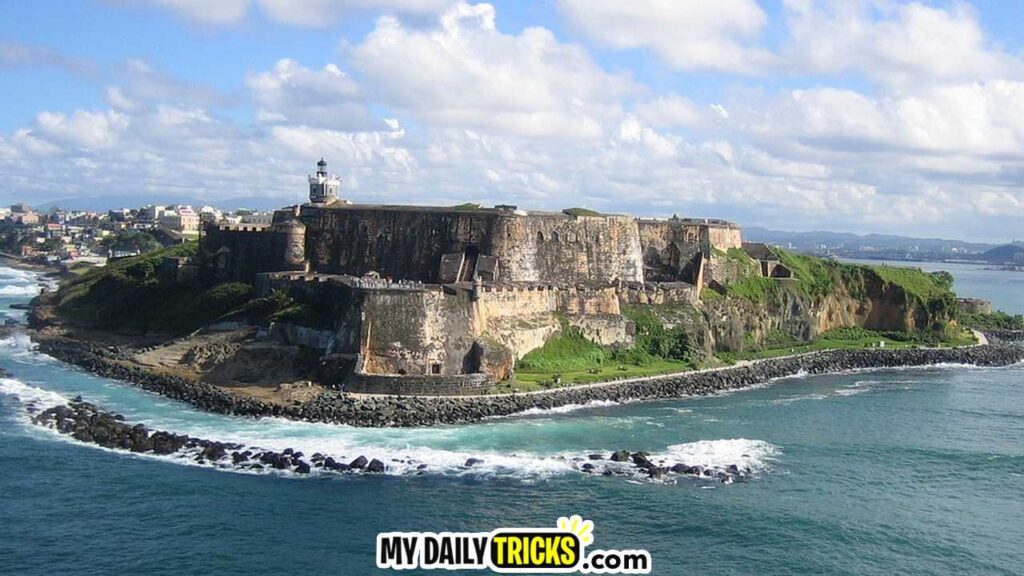Nestled in the heart of the Caribbean, Puerto Rico beckons travelers with its rich cultural heritage, stunning landscapes, and warm hospitality. Whether you’re drawn to the historical charm of Old San Juan, the lush rainforests of El Yunque, or the pristine beaches that stretch along its coasts, Puerto Rico offers a diverse array of experiences. In this comprehensive guide, we’ll explore the best times to visit this enchanting island, address safety concerns, and provide essential information for a memorable Puerto Rican adventure.

Best Time to Travel to Puerto Rico:
Peak Season (December to April):
The winter months mark Puerto Rico’s peak tourist season, characterized by mild temperatures, clear skies, and minimal rainfall. This period is ideal for beachgoers and outdoor enthusiasts, as the weather is generally dry and comfortable. Keep in mind that the popularity of this season means higher prices for accommodations and increased crowds, especially around major holidays.
Shoulder Seasons (May to July, September to November):
The shoulder seasons offer a sweet spot between the peak and off-peak periods. May to July and September to November bring fewer crowds, lower accommodation prices, and still pleasant weather. While there’s a slightly higher chance of rain, the lush landscapes and cultural events during these months make it a worthwhile trade-off for budget-conscious travelers.
Off-Peak Season (August):
August is considered the off-peak season due to higher humidity, increased chances of rain, and the potential for hurricanes. However, if you’re willing to take a risk with the weather, you may find great deals on accommodations and enjoy a more laid-back experience with fewer tourists.
Worst Time to Travel to Puerto Rico:
Hurricane Season (June to November):
The hurricane season, officially from June to November, poses a potential risk for travelers. While not every day during this period will experience extreme weather, it’s essential to stay informed about weather forecasts and consider travel insurance that covers unforeseen circumstances. August and September are peak months for hurricanes, so cautious planning is advised during these times.
Is It Safe to Travel to Puerto Rico?
Puerto Rico is generally a safe destination for tourists, with a well-developed tourism infrastructure and friendly locals. However, like any travel destination, it’s essential to take common-sense precautions:
Urban Areas:
Exercise standard safety practices, especially in urban areas. Keep an eye on your belongings, avoid poorly lit or isolated areas at night, and be cautious in crowded places.
Natural Hazards:
Puerto Rico is prone to natural hazards such as hurricanes and earthquakes. Stay informed about weather forecasts and follow any instructions from local authorities. Be aware of your surroundings and emergency evacuation routes.
Health and Well-being:
Stay hydrated, use sunscreen, and take precautions against mosquito bites to prevent illnesses such as dengue. Ensure that you have travel insurance that covers medical emergencies.
Passport Requirements:
One of the advantages of traveling to Puerto Rico is that, as a U.S. territory, it doesn’t require a passport for U.S. citizens. Travelers from the mainland only need to bring a valid government-issued photo ID, such as a driver’s license.
Conclusion:
Puerto Rico, with its captivating blend of history, nature, and vibrant culture, is a gem in the Caribbean. Whether you choose to explore the historic forts of Old San Juan, hike through El Yunque National Forest, or relax on the pristine beaches, the island offers an unforgettable experience. Understanding the best times to visit, being aware of safety considerations, and knowing passport requirements will ensure a smooth and enjoyable journey as you immerse yourself in the beauty and warmth of Puerto Rico.



